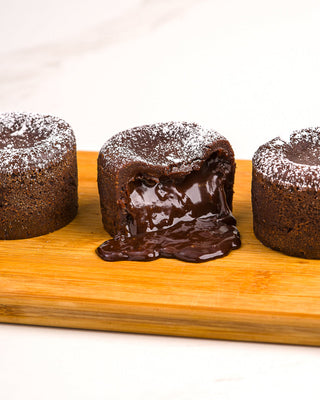When wandering through Singapore's bustling food scene, you'll encounter two distinct types of establishments offering baked goods: traditional bakeries and specialised French pastry shops. Understanding the premium difference between these establishments helps discerning consumers make informed choices about where to spend their money and what to expect from their pastry experience.
The Fundamental Distinction in Approach
French pastry shops, or patisseries, operate on completely different principles compared to regular bakeries. While standard bakeries focus on volume production and everyday affordability, French pastry shops prioritise artisanal craftsmanship and premium ingredients. This fundamental difference affects everything from ingredient sourcing to final presentation.
Regular bakeries typically emphasise practicality and accessibility. They produce large quantities of familiar items like sandwich bread, simple cakes, and basic pastries designed for daily consumption. The focus remains on consistent quality at reasonable prices, making these establishments neighbourhood staples.
French pastry shops, conversely, treat each creation as an art form. Every éclair, macaron, and croissant receives individual attention from skilled patissiers who've undergone extensive training. These establishments often limit daily production to maintain quality standards, resulting in premium pricing that reflects the intensive labour involved.
Ingredient Quality and Sourcing Standards
The premium difference becomes immediately apparent when examining ingredient quality. French pastry shops consistently invest in superior raw materials that significantly impact flavour profiles and texture. Premium European butter, Madagascar vanilla, Belgian chocolate, and organic flour form the foundation of their creations.
Regular bakeries often prioritise cost-effective ingredients that deliver acceptable results without breaking budgets. While these ingredients aren't necessarily poor quality, they rarely match the standards found in authentic patisseries. Commercial-grade chocolate, standard butter, and conventional flour suffice for everyday baking needs.
French pastry shops frequently establish relationships with specialised suppliers who provide seasonal ingredients and unique flavours. Fresh fruit sourcing follows strict standards, ensuring optimal ripeness and flavour concentration. Regular bakeries typically rely on distributors offering consistent supply chains focused on reliability rather than premium quality.
Technical Expertise and Training Requirements
The skill level required in French pastry shops far exceeds that of regular bakeries. Patissiers undergo years of rigorous training, often including formal culinary education and apprenticeships under experienced masters. They must master complex techniques like tempering chocolate, creating perfect laminated dough, and achieving precise sugar work.
Regular bakery staff typically learn practical skills through on-the-job training or shorter certification programmes. While competent at their craft, they rarely possess the advanced technical knowledge required for intricate French pastry work. The emphasis remains on efficiency and consistency rather than artistic mastery.
French pastry shops demand continuous learning and adaptation. Patissiers must stay current with evolving techniques, seasonal ingredient availability, and presentation trends. This ongoing education contributes to the premium pricing structure, as skilled artisans command higher wages than general bakery workers.
Production Methods and Time Investment
The time investment in French pastry production significantly exceeds regular bakery operations. Croissants require three days of preparation, involving multiple stages of lamination and resting periods. Macarons demand precise timing, temperature control, and careful monitoring throughout the process.
Regular bakeries optimise production schedules for efficiency. Bread production follows established timelines designed to maximise output while maintaining quality. Most items can be completed within single shifts, allowing for higher turnover and lower labour costs.
French pastry shops often begin preparation days in advance for complex items. Multi-component desserts require careful orchestration, with various elements prepared separately before final assembly. This extended timeline necessitates superior planning and organisation skills.
Presentation and Aesthetic Standards
Visual presentation represents another crucial distinction between French pastry shops and regular bakeries. Patisseries emphasise artistic presentation, with each item carefully plated and garnished. Display cases resemble jewellery showcases, highlighting the beauty of individual creations.
Regular bakeries prioritise practicality in presentation. Items are displayed clearly and appetisingly, but aesthetic considerations rarely drive decision-making. The focus remains on showcasing variety and value rather than creating visual masterpieces.
French pastry shops invest heavily in presentation equipment, including specialised display cases, custom packaging, and branded materials. These investments contribute to the premium experience but also increase operational costs reflected in final pricing.
Customer Experience and Service Standards
The customer experience at French pastry shops differs markedly from regular bakeries. Staff typically possess detailed knowledge about ingredients, preparation methods, and serving suggestions. They can explain complex flavour profiles and recommend complementary items.
Regular bakeries focus on efficient service and friendly interaction. While staff can answer basic questions about products, they rarely provide the detailed expertise found in specialised patisseries. The emphasis remains on quick, satisfactory service rather than educational experiences.
French pastry shops often create atmospheres that encourage lingering and appreciation. Comfortable seating areas, carefully curated music, and attention to ambiance contribute to the premium positioning. Regular bakeries typically emphasise functionality over atmosphere.
Pricing Structure and Value Proposition
The premium pricing at French pastry shops reflects the cumulative impact of superior ingredients, skilled labour, extended production times, and enhanced presentation. A single croissant might cost three times more than a regular bakery equivalent, but the quality difference justifies the premium for many consumers.
Regular bakeries maintain competitive pricing through efficient operations and cost-effective ingredients. Their value proposition centres on providing satisfactory quality at accessible prices, making them viable options for daily consumption.
French pastry shops position themselves as occasional indulgences or special occasion destinations. The premium pricing supports the artisanal approach while attracting customers who appreciate quality craftsmanship and unique flavours.
Making the Right Choice for Your Needs
Understanding these differences helps consumers make appropriate choices based on their specific needs and occasions. French pastry shops excel for special celebrations, gifts, or when seeking unique culinary experiences. Regular bakeries serve daily needs efficiently and affordably.
Both establishment types serve important roles in Singapore's diverse food landscape. The premium difference reflects genuine distinctions in approach, quality, and expertise rather than mere marketing positioning. Informed consumers can appreciate the value proposition of each option and make choices aligned with their preferences and budgets.

